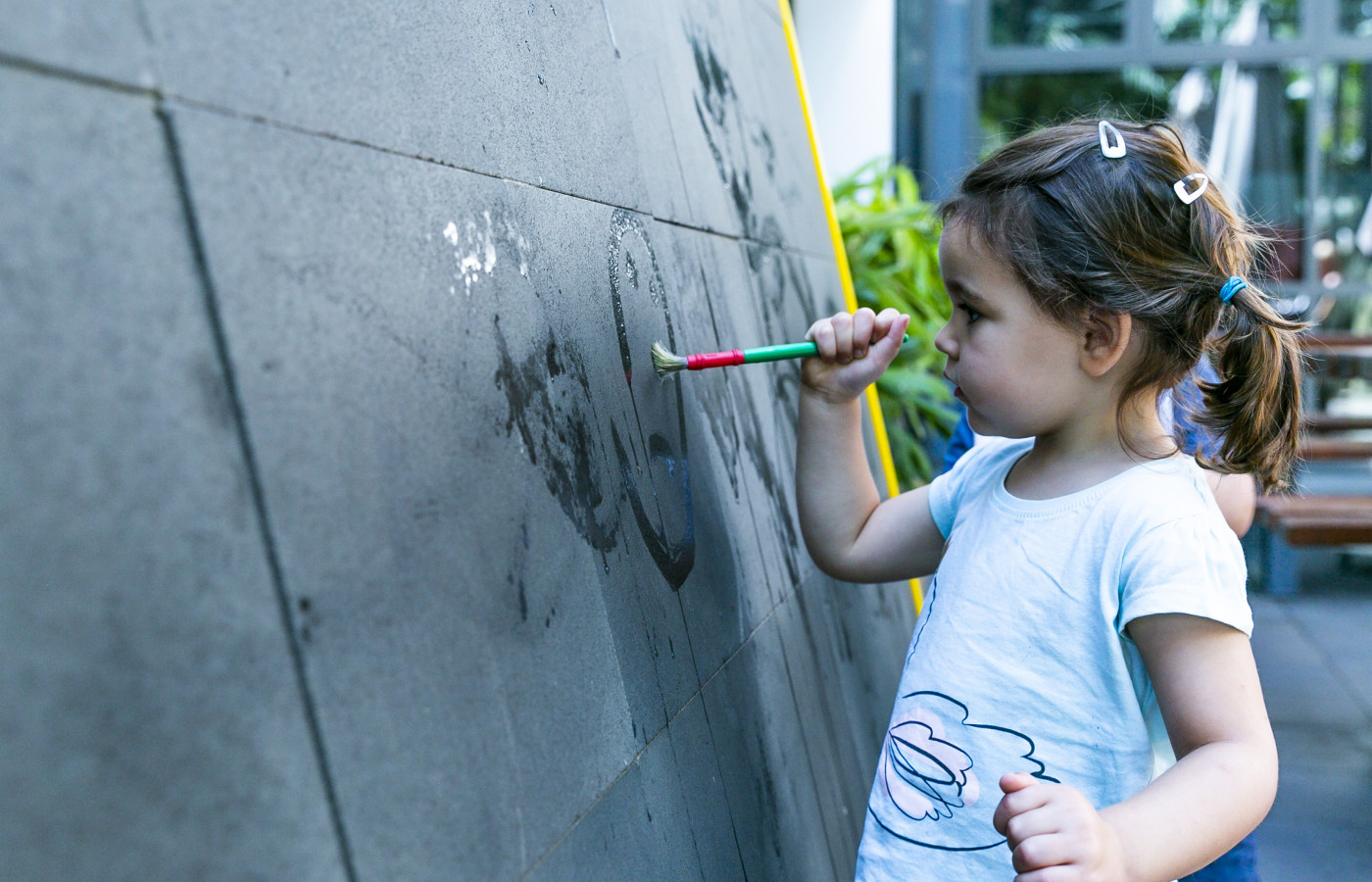Fence painting!

Fence painting!
Paint your fence or wall with water.
Materials Required
- Paint brush
- Bucket or container
- Water
- Bowl
- Dishmop
- Towel
Sponges or kitchen utensils
Play experience profile
-
Ages:
-
Min Playtime15 - 30 Minutes
-
Skills
-
Energy LevelActive play
-
Messiness Rating
-
EYLF Outcomes
Play Experience Preparation
Set up a safe area to fence paint. - Dress children in old clothing or encourage to wear an apron. - Have a towel on hand to dry the child.Experience Steps
- Fill a small bucket or bowls with water.
- Put buckets or bowls of water beside fence.
- Add Paint brushes, sponges or kicthen utensils to apply water.
- Paint the fence or wall with water with the child and talk about what is happening.
- Use different brushes or kitchen utensils to discover how the water is applied.

What to talk about, or questions to ask during the experience
- Is the water cold?
- How high can you reach?
- Swish, splosh and splash
- Cold, wet, dry
- What pictures can you paint?
- Tell me about what you are painting?
Build on this...
- Painting an outdoor concrete area.
- Spray bottle painting with coloured water on material outside.
WHO guidelines for physical activity and sedentary behaviour
Provide evidence-based public health recommendations for children, adolescents and adults on physical activity.
Learn more
Provide evidence-based public health recommendations for children, adolescents and adults on physical activity. Learn more
This activity promotes physical activity by using large body movements.
EYLF Outcomes
The Early Years Learning Framework has been designed for use by early childhood educators working in partnership with families, children’s first and most influential educators.
View PDF
The Early Years Learning Framework has been designed for use by early childhood educators working in partnership with families, children’s first and most influential educators. View PDF
- Children develop a range of skills and processes such as problem solving, inquiry, experimentation, hypothesising, researching and investigating
- Children transfer and adapt what they have learned from one context to another
EYLF Principle
Principle 3: High expectations and equity. Children progress well when they, their parents and educators hold high expectations for their achievement in learning.
EYLF Practice
Practice: Intentional teaching. Intentional teaching is deliberate, purposeful and thoughtful. They use strategies such as modelling and demonstrating, open questioning, speculating, explaining, engaging in shared thinking and problem solving to extend children’s thinking and learning.
Author:


